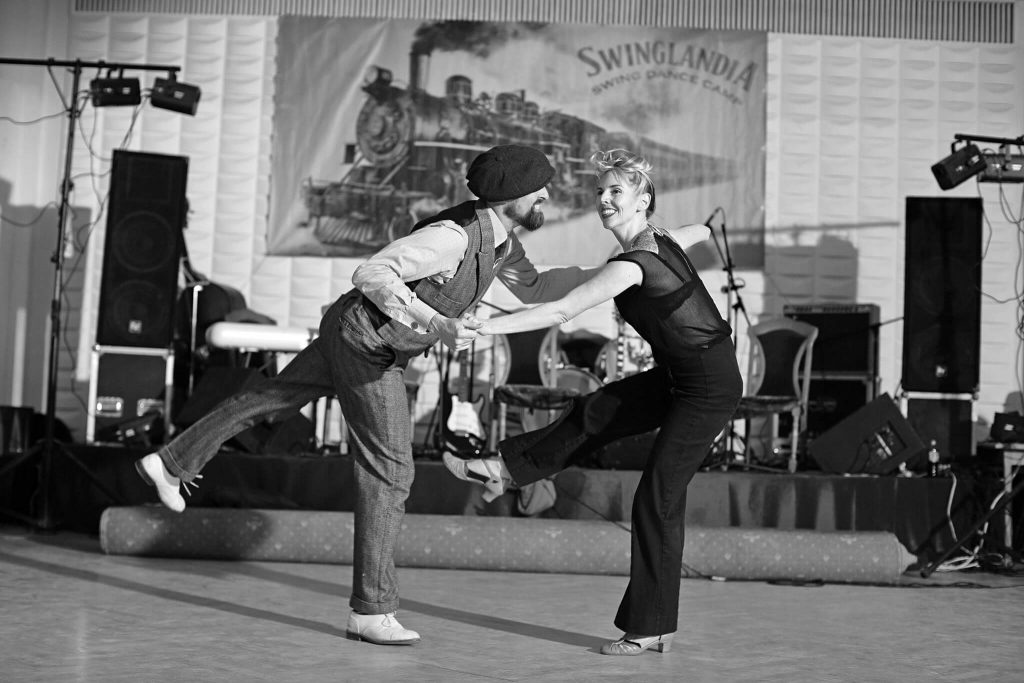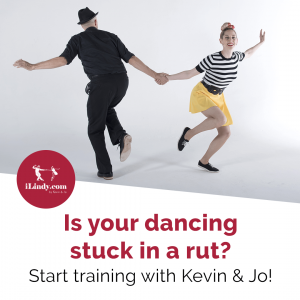As with most music and movement, what comes in and out of vogue is cyclical. Depending on how long you’ve been in the scene, you’ve experienced multiple trends in the dance. You may have even gone through revisiting some ideas that have gone in and out of fashion. In recent years, it seems like maybe Balboa and Shag have displaced some people’s Charleston to become their new default for faster music. But listen up! There is absolutely a place for all kinds of Swing Dancing including Balboa, Shag, AND Charleston. They do not fill the same need. They each have something unique to offer.
We’ve noticed that in some cities we visit Charleston is hardly done at all. It’s hard to say if it’s a lack of popularity or just a lack of knowledge, but either way, we’re hoping it will make a comeback soon.
Partnered Charleston is at the root of Lindy Hop. First, there was the Charleston, then came the Breakaway, which introduced the open shape that turned into the Swing Out. You can really see the evolution in this classic clip from After Seben.
Going back to the origins of Charleston, it was originally named after the city of Charleston in South Carolina. To most people outside of our Lindy Hop community, Charleston is actually more famous than Lindy Hop. In part, that’s probably because of the famous Charleston song, which also helped popularize the dance. That classic song is useful because it really illustrates the “odd” accents of the Charleston. The song goes: “Charl-ston, charl-ston da da dada Charl-ston” with an emphasis on 1, 3, 5, and 7. It’s those accents on the odd beats that characterize the unique rhythm of the dance. As the music changed, so did the dance. Breakaways and triple steps were added and shortly thereafter the dance became what we recognize as Lindy Hop.
If you’re interested in reading more about the history of Lindy Hop (and Charleston), check out Bobby’s White’s blog post on Swungover.

Photo by Viacheslav Muzyka
We don’t dance Charleston just because of its historical roots; it’s also exceptionally practical! Charleston can be danced both solo and partnered, supports both pattern recognition and Lead & Follow technique, makes dancing to higher tempos easier, and it adds a great rhythmical texture to your dancing.
Most importantly, Charleston adds a wonderful dynamic to your partner dancing. There’s nothing quite like the feeling of going through some fast Lindy Hop sequences and them BOOM! Firing into some badass Tandem Charleston or a surprise Hand to Hand pattern.
This also gives you an interesting look at the root of various solo jazz steps. The steps that start on “1” usually have earlier Charleston roots, while the steps that start on “8” relate to the more swinging music that came later.

Credit: Prague Swing Xmas 2016 / Matej Tresnak / Zig Zag
Charleston is rhythmical, bold, and just makes your dancing so much more interesting. So if you don’t do much Charleston, where should you start? Or if you’re a fan of Charleston and you want to widen your repertoire, what are some new ideas to broaden your Charleston horizons?
First, basic partnered Charleston figures every Lindy Hoppers needs to know. Most of the complex partnered Charleston figures stem from these core moves.
Once you have the basic, you can start to add to your repertoire.
It’s all in the transitions! Spending time to thoroughly know the entrances and exits to each Charleston move can make all the difference when you get to the social dance floor.
Also very useful and important to know is how to execute, lead, follow, and comfortably move through the Charleston Tuck Turn, which lays down foundations like building blocks for further Charleston exploration.
 Getting back to Tandem Charleston, these are generally a must in every Lindy Hoppers repertoire. If you can’t lead and follow these, it’s hard to call yourself a Lindy Hopper.
Getting back to Tandem Charleston, these are generally a must in every Lindy Hoppers repertoire. If you can’t lead and follow these, it’s hard to call yourself a Lindy Hopper.
Once you have all these building blocks of Charleston under your belt, you can get into really fun and interesting Charleston transitions. Here are a few of our favorites.
These are just some of the ways that you can start to incorporate interesting and fun Charleston steps into your dancing. We have an entire Charleston Course to take you through extensive Charleston material so you’ll never be at a loss for vocabulary!
What’s great about Charleston is that it’s perfectly designed for making up new moves and combinations. A lot of people find it easier to make up new Charleston moves than “triple step” moves, so making Charleston an everyday part of your dance repertoire will also broaden your horizons and open doors to new material and inspiration. It will make your Lindy Hop so much more interesting.
Do you have a favorite Charleston move? A Charleston request for a future video? Tell us about it in the comments!